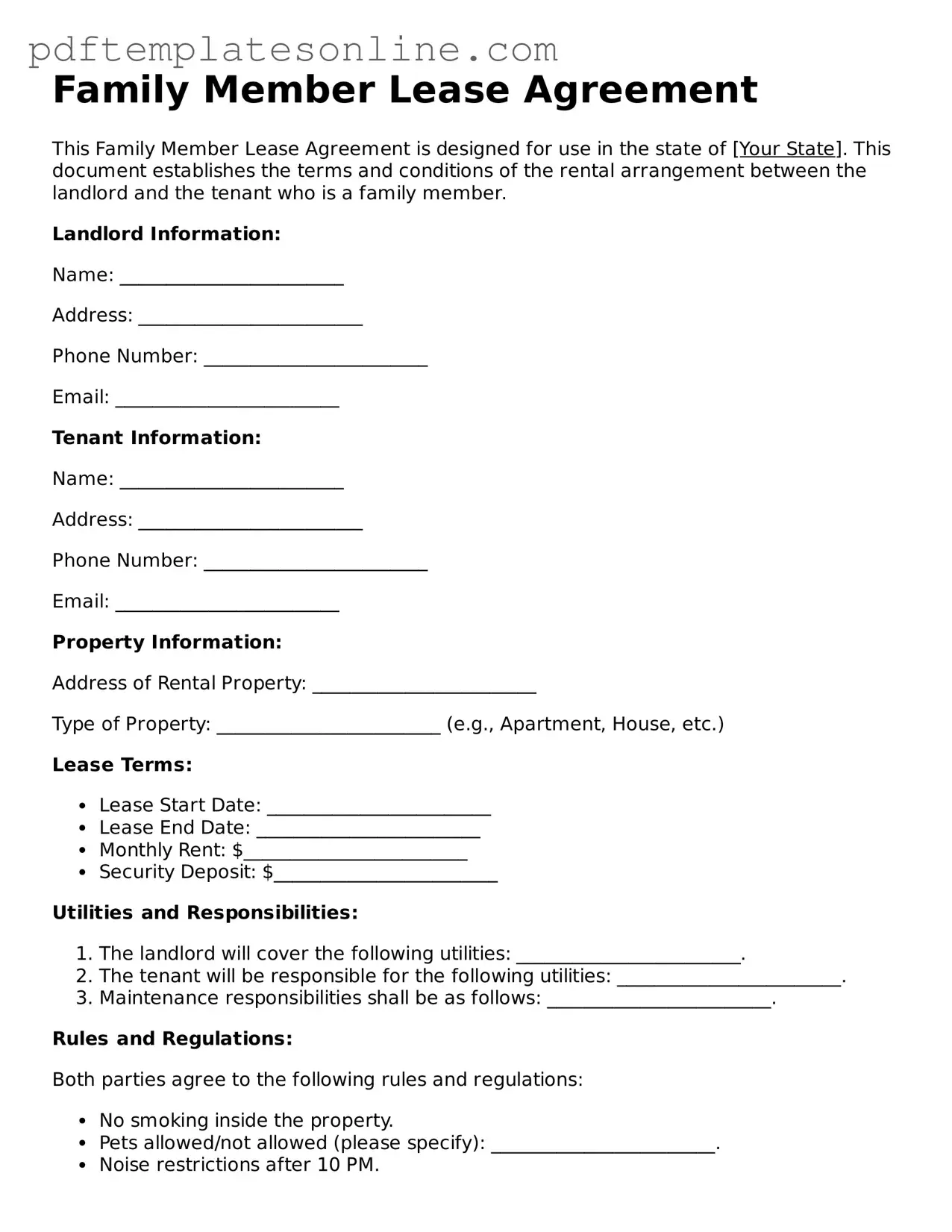Fillable Family Member Lease Agreement Document
The Family Member Lease Agreement is a document that outlines the terms under which a family member can rent a property from another family member. This agreement helps clarify expectations regarding rent, maintenance, and other responsibilities. By formalizing the arrangement, both parties can prevent misunderstandings and protect their interests.
Access Family Member Lease Agreement Editor Now
